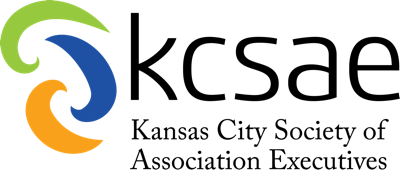By Ashley Bentley, CAE, KCSAE Director
Did the cliche title hook you? If so, you’ll like what comes next.
A new year is upon us. One thing I’m looking forward to in 2022 is continuing on my professional development journey by serving you on the KCSAE board of directors. Thank you for your support which allowed me to take on this role. Before you put 2021 to rest, I hope you’ll join me in taking some time to make sure professional development is on our priority list for 2022.
Just as we wouldn’t enter a new big initiative without making sure we have the right assets in place to support it, we need to ensure we’ve set ourselves up for professional success with getting all the right assets in place. And the major steps in the process look pretty similar, too:
- Set goals
- Build your team
- Make a plan
Set goals
Goal setting is a critical piece of any professional development plan. It requires us to stop and think about what we want to accomplish, where we want to be long-term, and to bring it back to a few key steps we need to take to put ourselves on the right path at the right pace. We do this all the time in our daily work managing associations, teams, and projects, but we often forget to do it for ourselves.
One way to ensure our professional development goals align with organizational priorities is to start our professional development plan with our organization’s strategic priorities. Consider what you must achieve for the organization to be successful, and what knowledge or skills you might need to gain to contribute your maximum to the organization’s priorities.
We should also think about our own professional and personal development goals broadly, asking ourselves where we want to be - professionally and personally - in the next 3, 5, or 10 years. What will it take to get there? What knowledge and skills do we need to gain? Whose help do we need? Then, what can we do in the year ahead to put ourselves on track for those goals?
Then, the real gold mine is in finding alignment between goals to help your organization be successful and goals for your own professional development. Add in some concrete next steps and a specific plan for how you’ll hold yourself accountable, and you’re all set.
Build your team
Most of us know it’s important to both have and be a mentor, a role model, a coach, and a sponsor. But do we really understand the difference, and are we deliberate in making sure our network includes all of these roles? If you’re missing any of these, set a goal to recruit some new team members this year.
Role models: These are people we want to emulate. They can be people we know or people we don’t, and we can be motivated by specific aspects of their behavior or influence. Our network of role models can be large or small, but it should be deliberate. Take the time to ask yourself who are your role models. Are you missing a role model for a trait you’d really like to develop? How do you find someone to fill that gap?
Sponsors: Sponsors are people who give us access we wouldn’t have otherwise had. They open doors we couldn’t open ourselves or didn’t even know existed. They are invested in our professional success, but they can do so without necessarily coaching or mentoring us. Sponsors are often people with a level of power we don’t have. They are critical to our success.
Coaches: Coaches are people who help us figure out our own path. They ask us questions that help us find our own solutions. You can find highly trained professional coaches or colleagues or others from your professional network who can help you.
Mentors: For mentors, quality definitely trumps quantity. You need just a few strong mentoring relationships with people who believe in you and have an interest in your success. Mentors can also be role models, coaches, and sponsors, but they make a deeper commitment to you, work with you on your development usually over a long period of time, and wear different hats of advising, coaching, and supporting along the way.
Make a plan
When we’ve figured out what we want to do and why, and who can help us, the next step is figuring out how. We need to create a professional development plan for ourselves that outlines how we’ll reach our goals, gain new knowledge, skills, and experiences, build our network, and keep well-rounded. We should make sure accountability is part of that plan. Even better - make sure someone else (maybe one of our sponsors or mentors?) is checking in with us to hold us accountable.
If you want to tap into the experiences of your professional community to help advise your plan, join the CAE Special Interest Group virtually Wednesday, December 8, from 11:30 a.m. - 1 p.m. for our annual program kickoff, Professional Development and Goal Setting.
Whether you’re an experienced CEO or an early career professional in your first association management job, we all have opportunity to help support the professional development of others. For every person who has helped make you the professional you are today, remember to pay it forward to someone who could use your support.
And best wishes for a beautiful holiday season for you and yours.
